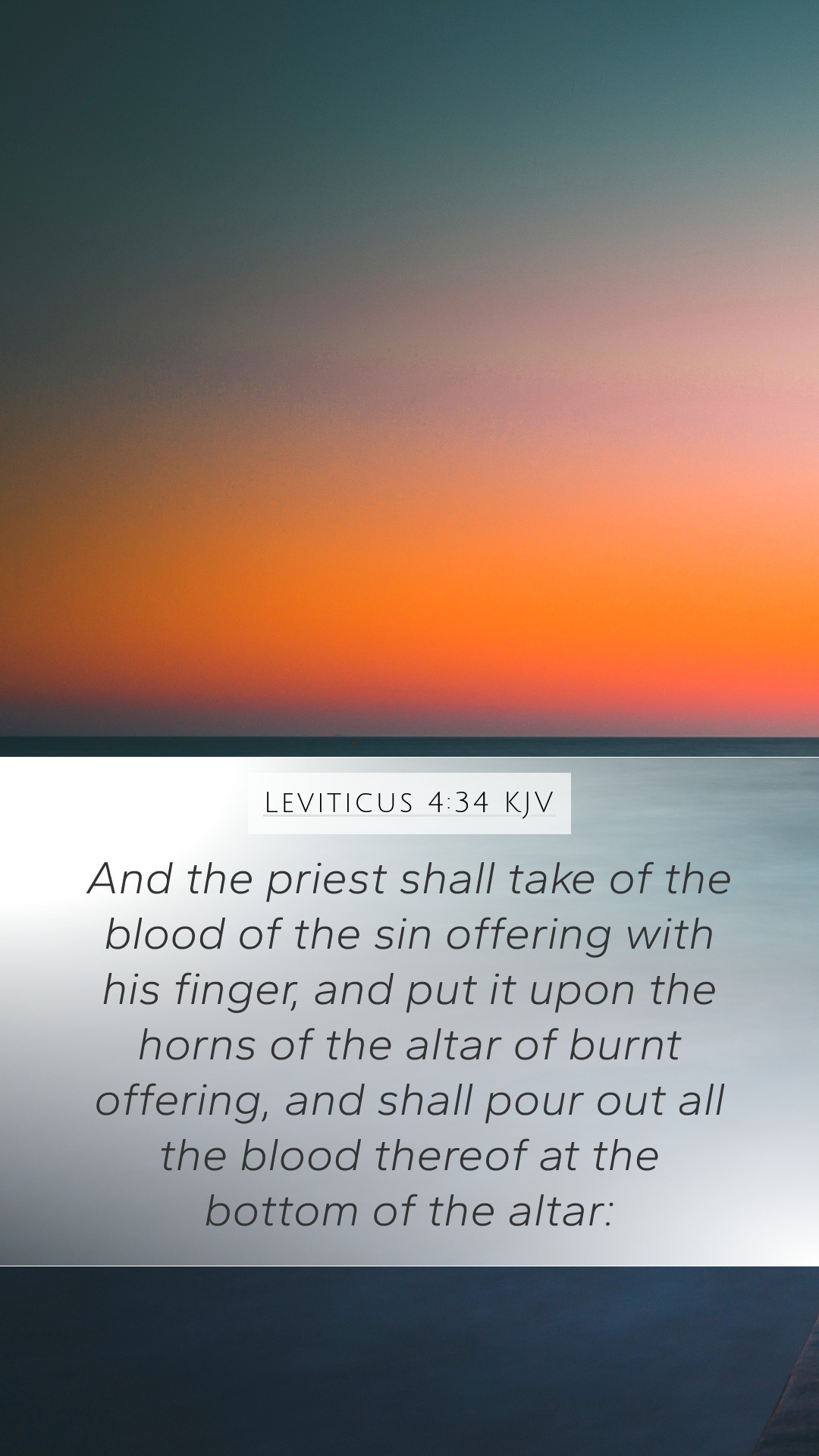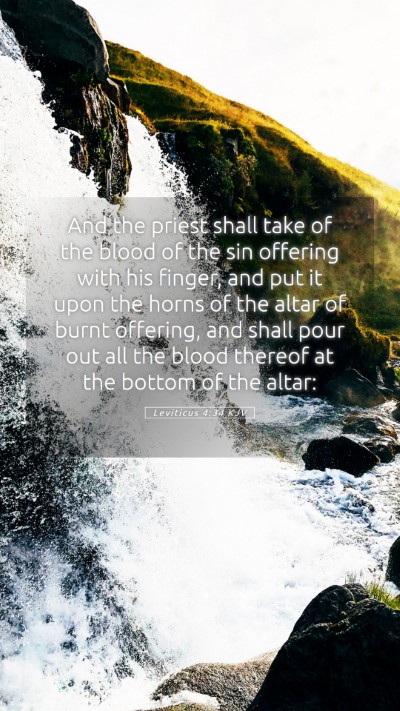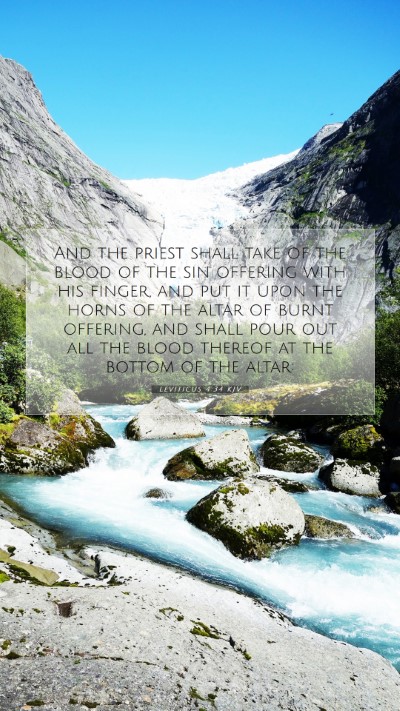Bible Verse Commentary and Meaning
In this verse, we examine a specific aspect of the sin offering preparations and the role of the priest. The act described is filled with rich theological implications and serves as a significant ritual in the Law of Moses. Below, we will explore its meaning through insights derived from various public domain commentaries, including those by Matthew Henry, Albert Barnes, and Adam Clarke.
Significance of the Blood
The blood in the sin offering represents the life of the sacrifice and the seriousness of sin. Matthew Henry notes that the shedding of blood is a fundamental aspect of atonement, emphasizing the seriousness with which God views sin. This act demonstrates that atonement for sin requires a life – a precursor to the ultimate sacrifice made by Jesus Christ in the New Testament, which fundamentally transforms the understanding of atonement.
The Role of the Priest
The priest acts as an intermediary between God and the people. Albert Barnes highlights that this role is crucial because it reinforces the necessity of having a mediator in the relationship between God and fallen humanity. The priest's act of putting blood on the horns of the altar signifies the covering of sin and the restoration of fellowship with God.
Understanding Rituals and Symbolism
Adam Clarke elaborates on the ritualistic elements of this verse, reminding us that the physical actions symbolize deeper spiritual truths. The horn of the altar signifies the power of God to cleanse and redeem. The pouring out of blood at the base of the altar provides a complete picture of atonement – not only is the sacrifice offered, but its effects extend beyond to the community, symbolizing their need for cleansing and restoration.
Application and Relevance
For contemporary readers, Leviticus 4:34 brings valuable insights into the concepts of atonement and sacrifice. The necessity of atonement highlights the nature of sin and its consequences, a theme reiterated throughout Scripture. Reflecting on this verse allows Bible study groups and individuals engaging in online Bible study to understand the depth of God's forgiveness and grace.
Reflection on Atonement in Daily Life
Understanding the significance of such sacrifices helps believers appreciate the gravity of their sin and the boundless grace offered through Jesus Christ. The lesson of reliance on a mediator resonates deeply in Christian theology. In applying this verse to daily life, it encourages an attitude of humility and gratitude for God's redemptive work.
Cross References
- Hebrews 9:22 - "And almost all things are by the law purged with blood; and without shedding of blood is no remission." This verse connects with the principle of atonement.
- Leviticus 16:15-16 - Discusses the goat offered as a sin offering on the Day of Atonement.
- 1 Peter 1:19 - "But with the precious blood of Christ, as of a lamb without blemish and without spot." This emphasizes the fulfillment of the sacrificial system through Christ.
Conclusion
Leviticus 4:34 serves as a powerful reminder of the gravity of sin and the lengths to which God goes to provide atonement. Through understanding this verse, we gain insights into the holistic nature of Biblical atonement, the necessity of a mediator, and the profound grace extended to believers. This verse not only informs us of ancient practices but connects us to God's unfolding plan of salvation that ultimately finds its culmination in Christ.


